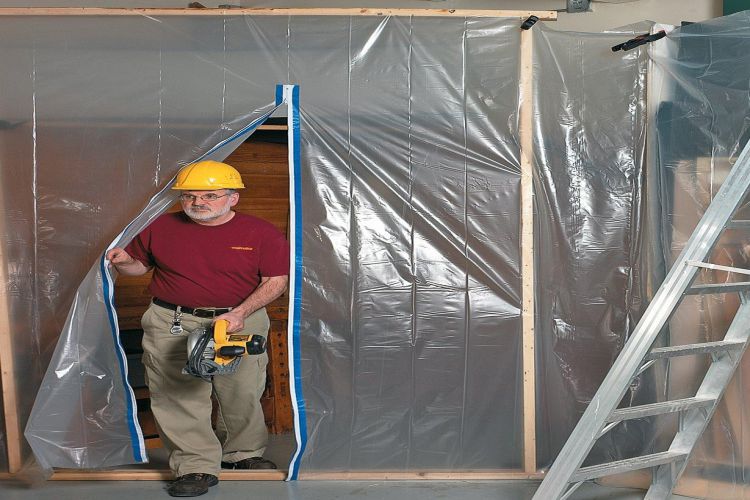 If you are working on a construction project, you know how important it is to protect the site from dust, debris, noise, and other hazards. You will also want to ensure the safety and comfort of your workers and visitors. One of the best ways to achieve these goals is to use zip doors.
If you are working on a construction project, you know how important it is to protect the site from dust, debris, noise, and other hazards. You will also want to ensure the safety and comfort of your workers and visitors. One of the best ways to achieve these goals is to use zip doors.
What are zip doors?
Zip doors are temporary doors installed on any opening, such as doorways, windows, or walls. They are made of durable plastic or fabric material that can be zipped and unzipped easily. Zip doors create a seal that prevents dust, dirt, and moisture from entering or exiting the work area. They also reduce noise and improve air quality by preventing air leakage.
Why use zip doors?
Zip doors have many benefits for construction projects, such as:
1. Dust control:
Zip doors prevent dust from spreading to other areas of the building or outside. Hence, reducing the risk of health problems, such as asthma, allergies, or respiratory infections, for workers and occupants. It also protects the quality of the finished work and prevents damage to equipment and furniture.
2. Noise reduction:
Zip doors reduce the noise level in the work area by blocking sound waves. This improves the working conditions for workers and minimizes the disturbance to neighbors and nearby businesses. It also complies with noise regulations and standards.
3. Energy efficiency:
Zip doors prevent air leakage from the work area, which reduces heating and cooling costs. Hence, saving money and energy and the environmental impact of the project.
4. Security:
Zip doors provide a barrier that prevents unauthorized access to the work area, protecting the workers, materials, and tools from theft, vandalism, or sabotage. Furthermore, it prevents accidents and injuries by keeping children, pets, and other curious visitors away from the site.
5. Convenience:
Zip doors are easy to install and remove. This makes them to be attached to any existing frame or structure with adhesive tape, nails, or screws. They can be opened and closed quickly and smoothly with zippers or Velcro. They can also be customized to fit any size or shape of the opening.
What are some different types of zip doors available?
1. Standard zip doors:
These are the most common type of zip door made of PVC or vinyl, and they are a good all-purpose option. Standard zip doors are easy to install and operate, and they are relatively inexpensive.
2. Fire-rated zip doors:
These doors are designed to meet fire safety codes, and they are ideal for use in areas where there is a high risk of fire. Fire-rated zip doors are typically made of steel or aluminum and are fire-resistant for up to 90 minutes. They are pricier than standard zip doors, but they can help to protect the construction site from fire damage.
3. Soundproof zip doors:
These doors are designed to reduce noise pollution, and they are ideal for use in areas where noise is a concern. Soundproof zip doors are typically made of heavy-duty materials, such as soundproofing insulation and acoustic curtains. They are pricier than standard zip doors.
4. Clear zip doors:
These doors are made of transparent material, such as PVC or vinyl, which allows for visibility through the door. Clear zip doors are ideal for use in areas, such as entrances and exits.
5. Custom zip doors:
These doors can be made to meet specific needs, such as size, color, or material. Custom zip doors are a suitable option for construction sites that have unique requirements.
How to choose the right zip door?
There are different types of zip doors available in the market, depending on the material, size, color, and features. Some factors to consider when selecting the appropriate zip door for your project are:
1. Material:
Zip doors can be made of plastic or fabric material. Plastic zip doors are more durable and resistant to tears, punctures, and abrasions. They are also waterproof and easy to clean. Fabric zip doors are more flexible and lightweight. They are also breathable and allow some air circulation. However, they are more prone to damage and staining.
2. Size:
Zip doors come in various sizes, ranging from small to large. The size of the zip door should match the size of the opening. It should also allow enough space for workers and equipment to pass through. If the opening is too large, you may need to use more than one zip door or combine them with other materials, such as hoarding panels, bubble board, or core flute.
3. Color:
Zip doors can be transparent, opaque, or colored. Transparent zip doors allow natural light and visibility into the work area. They are ideal for projects that require supervision or inspection. Opaque zip doors block light and visibility. They are ideal for projects that require privacy or confidentiality. Colored zip doors can be used to create a contrast or a theme for the project. They can also be used to indicate different zones or areas within the work site.
4. Features:
Zip doors can have various features, such as:
-
Sticky mat:
A sticky mat is a mat that has a sticky surface that traps dust and dirt from shoes and wheels. It is placed at the entrance of the zip door to prevent contamination and keep the work area clean.
-
PVC panel:
A PVC panel is a panel that is made of polyvinyl chloride, a plastic material that is rigid and durable. It is attached to the zip door to provide extra strength and stability. It can also be used to display information, such as logos, signs, or notices.
-
Protective foam:
Protective foam is a foam material that is soft and cushioning. It is attached to the edges of the zip door to prevent damage to the door frame or the wall. It can also prevent injuries to workers or visitors who may bump into the zip door.
-
Acoustic curtains:
Acoustic curtains are curtains that are made of fabric material that has sound-absorbing properties. They are attached to the zip door to reduce noise and improve acoustics. They can also enhance the appearance and aesthetics of the zip door.
Conclusion
Zip doors are an essential tool for workers and work sites in general as they provide protection, safety, efficiency, and convenience. They also add quality and appearance to the finished work. Zip doors can be customized to suit any project’s needs and preferences. They can be combined with other materials and products, such as hoarding panels, bubble board, poly weave, floor protection, core flute, protective foam, PVC panel, core flute, hoardings, MDF sheet, zip door, edge protection, MDF, corflute protection, acoustic curtains, dust control, plyboard, corflute, plastic floor protector, hoarding construction, and PVC wall panels. Zip doors are the ultimate solution for zipping into safety.




